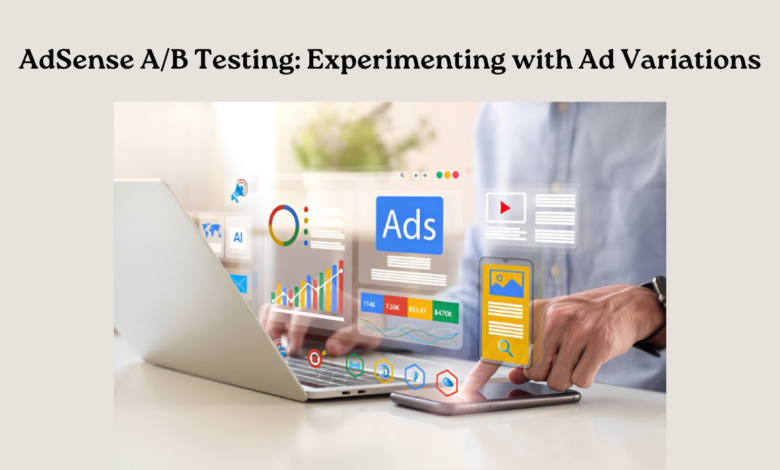AdSense A/B Testing: Experimenting with Ad Variations

Online advertisers rely on clicks for success. A/B testing is key to optimizing ad campaigns, especially within Google AdSense. This article explores its importance, steps, metrics for success, and essential tools.
Importance of A/B Testing
A/B testing, or split testing, is vital for enhancing ad performance. It compares multiple ad versions to find which generates more clicks, conversions, and revenue. This systematic testing helps advertisers pinpoint audience preferences and fine-tune their strategies.
How to Conduct A/B Testing
1. Identify Variables:
Start by pinpointing the elements you want to test, such as ad copy, images, call-to-action buttons, or placement on the webpage.
2. Generate Variations:
Produce several iterations of your ad, altering one variable in each. For example, if testing ad copy, create two versions with different headlines or body text.
3. Set Up Experiments:
Within the Google AdSense platform, navigate to the “Experiments” section and create a new experiment. Choose the ad units you want to test and specify the variations to be included.
4. Define Metrics:
Determine the key performance indicators (KPIs) you’ll use to measure success, such as click-through rate (CTR), conversion rate, or revenue per thousand impressions (RPM).
5. Run Experiments:
Launch your A/B test and allow both variations to run simultaneously for a sufficient duration to gather statistically significant data. Google AdSense will evenly distribute traffic between the different versions.
6. Analyze Results:
After the experiment concludes, analyze the data to determine which variation performed better based on your chosen metrics.
Key Performance Indicators
1. Click-Through Rate (CTR):
Indicates the proportion of users who click on your ad upon viewing it. A higher CTR signifies increased engagement.
2. Conversion Rate:
Monitors the percentage of users who fulfill a desired action, like making a purchase or subscribing to a newsletter, post-click on your ad.
3. Revenue Per Click (RPC):
Calculates the average revenue generated for each click on your ad.
4. Revenue Per Thousand Impressions (RPM):
Reflects the estimated earnings generated for every thousand ad impressions.
Tools for Successful A/B Testing
1. Google Optimize:
Offers a user-friendly interface for creating and running A/B tests, along with robust reporting features.
2. Optimizely:
Provides advanced experimentation capabilities, including multivariate testing and personalization options.
3. Hotjar:
Offers heatmaps, session recordings, and user surveys to gain deeper insights into user behavior and preferences.
Conclusion
A/B testing is a powerful strategy for optimizing AdSense ad performance. By systematically testing different variations and analyzing the results, advertisers can refine their campaigns to maximize engagement, conversions, and revenue. With the right approach and tools, A/B testing can be a game-changer in the world of online advertising.
Check www.intogeeks.com for more A/B Testing tips.



